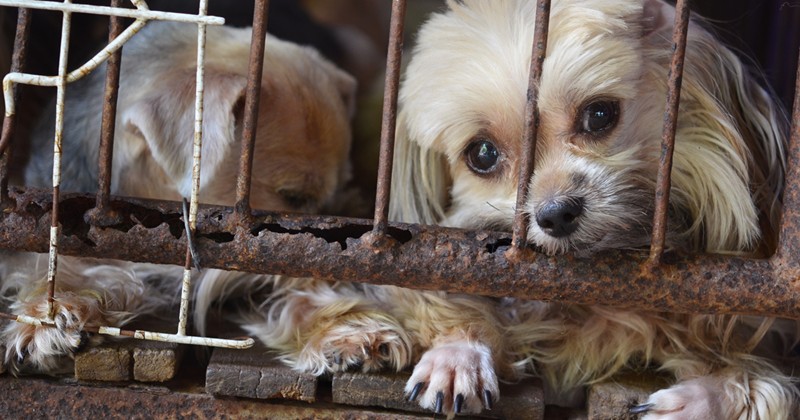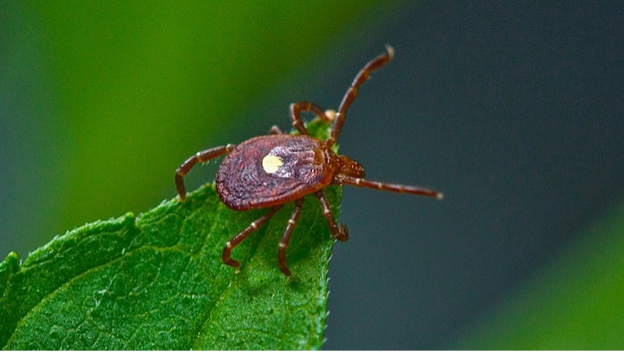Is Donald Trump trying to make puppy mills great again?
Actually, that’s a trick question because puppy mills were never great. In fact, puppy mills are one of the uglier bits of scumbaggery to emerge from a burgeoning pet industry that has, according to the American Pet Products Association, ballooned from $17 billion in 1994 to nearly $63 billion in 2016.
About $2.1 billion of that total is ‘live animal purchases’, and the people who butter their bread by breeding animals fall under the regulatory purview of the USDA’s Animal and Plant Health Inspection Service (APHIS).
Right now, there are an estimated 10,000 dog breeders nationwide, and the USDA’s minuscule budget of $28 million annually means they only keep tabs on a small fraction of them. As a result, there are fewer than 3,000 officially ‘regulated’ breeders.
Falling into that sizable gap between ‘regulated’ and ‘unregulated’ are thousands of facilities ignominiously known as ‘puppy mills’.
Factory farms for dogs
If you haven’t seen video footage of a puppy mill, you might not be aware of just how sadly appropriate that moniker is for these fetid factories of fecundity. Unregulated breeders run Dickensian ‘mills’ filled with malnutritioned, poorly-groomed, and chronically infirm dogs that are all-too-often crammed into cages throughout the entirety of their utterly bereft lives.
Each of these captive canines produces an average of nearly ten puppies per year in operations that amount to the factory farming of dogs. The puppies are sold in retail stores for a tidy profit to customers who often find their newest member of the family is sick or overbred or worse.
For those seeking compensation for their ‘defective product’, tracking back to the breeders is a daunting task. Even if they’ve been inspected and accumulated numerous violations, the USDA rarely revokes licenses or even enforces minimum compliance with the law. Amazingly, it has collected less than $4 million in fines over the last two years, according to a shocking investigative report published in a recent issue of Rolling Stone.
But now the difficult task of keeping tabs on sleazy breeders who refuse to comply with even the meager, decrepit standards of the anachronistic Animal Welfare Act (AWA) just got a whole lot harder.
That’s thanks in part to the Trump Administration’s ‘delete first … so we won’t have to ask questions later’ approach to everything related to science, public health, safety, or anything that might crimp the money-making style of Trump’s corporate supporters.
Draining the swamp? Or swamping the drain?
In the spirit of gag orders imposed on a number of science-dependent agencies, the USDA abruptly ‘purged’ its online database of “inspection reports and other information from its website about the treatment of animals at thousands of research laboratories, zoos, dog breeding operations and other facilities”, according to a story first reported by the Washington Post.
“Going forward, APHIS will remove from its website inspection reports, regulatory correspondence, research facility annual reports, and enforcement records that have not received final adjudication. APHIS will also review and redact, as necessary, the lists of licensees and registrants under the AWA, as well as lists of designated qualified persons (DQPs) licensed by USDA-certified horse industry organizations”, the USDA said on its website.
And it’s that last bit about “USDA-certified horse industry organizations” that might be the key to unraveling a move that has outraged animal welfare activists, journalists, and even a few conservative commentators like Laura Ingraham and Tammy Bruce. Writing in the Washington Times, Ms. Bruce questioned the move as a “disturbing” and “odd” move for an “administration to be committed to transparency, draining the swamp and ending lobbyist control of policy.”
Of course, it’s hard to tell whether the Trump Administration wants to drain the swamp or to swamp the drain with crony capitalists in an attempt to flood the already financially fertile plains of Washington, DC with the loamy, rich monetary manure spread so profitably by key industries.
Who benefits?
So, who benefits from a widely unpopular decision that generated angry hashtags like #USDAblackout and #NoUSDAblackout … and the filing of a new lawsuit claiming the blackout illegally obstructs the application of the Animal Welfare Act?
New reporting by the Washington Post indicates senior staffers within the UDSA advocated the purge in response to a lawsuit over the controversial practice of ‘soring‘ the legs of walking horses with harsh chemicals that inflict enough pain to cause the animal’s “high-stepping” gait to rise just a little bit higher. That, in turn, makes them more successful in competitions and raises their value as a commodity. In other words, no pain means less financial gain.
Ironically, the USDA recently banned soring … but suddenly decided to implement the data purge despite the decision to prohibit the very practice that sparked the lawsuit that supposedly led to the purge.
Perhaps it’s not coincidental that the ban came after the national Humane Society conducted its own investigations into horse soring or that their investigation would’ve relied in part on the exactly the type of data collected by USDA inspectors. But now, just like it will with profligate puppy millers, the purge effectively hides the identity of “horse industry organizations” with a documented history of soring and gives them new room to run roughshod on animal welfare protections.
And who decided?
So, who made this perplexing, politically unpopular decision?
Although he wasn’t necessarily opposed to the purge when it was first proposed, outgoing Secretary of Agriculture Tom Vilsack told the Post that he refused to sign-off on the new, information-obscuring rule because “there was not enough time for us to properly vet the recommendation, and I was concerned about transparency.”
But that was then and this is now. And now there is a new sheriff in town who has said regulations must go the way of the dying bumblebee his administration doesn’t want to list as an endangered species.
To wit, the prime mover behind the purge might be one of Trump’s lesser-known deputies – a guy name Brian Klippenstein of the industry-aligned Protect the Harvest. He is now the head of Trump’s USDA transition team. And the ‘harvest’ he and his barely-known advocacy group want to protect is the unchecked right of human beings to harvest animals for profit.
Mostly, they want to do so without any meddling by the Humane Society or even the barest protections for the welfare of animals. Klippenstein – who is something of a puppy mill enthusiast – is no doubt pleased with a purge that will make it easier to profit off of mistreating animals again.
So, with a tidy little bit of doublespeak, the USDA website replaced the database with a message explaining that the records were removed “based on our commitment to being transparent, remaining responsive to our stakeholders’ informational needs, and maintaining the privacy rights of individuals.”
Tying the animal defenders in red tape and paperwork
It’s the needs of those “stakeholders” – the breeders and businesses and big agricultural interests – that will predictably win out in this crony-laden administration. But wait … maybe this was just part of Team Trump’s war on the onerous, freedom-killing regulatory state … right? Hardly.
According to a fact sheet from the HSUS, these anything-but-onerous USDA ‘regulations’ make it perfectly legal to “keep dozens or even hundreds of breeding dogs in small wire cages for their entire lives with only the basics of food, water and rudimentary shelter.”
Despite that, many of the licensed breeders violate these comically inadequate standards in their never-ending quest to cruelly cut corners and squeeze a little more profit out of the cramped lives of dogs trapped in a perpetual cycle of insemination, pregnancy, and birth.
And that’s to say nothing of the thousands of unlicensed puppy mills whose only oversight comes from activists, nonprofits, journalists, and the occasional whistleblower … and whose operations only come to an end when these non-governmental do-gooders do the kind of good that one might expect from an agency tasked with the duty of ensuring a basic level of animal welfare.
As a result of the move, the Humane Society of the United States (HSUS), along with ASPCA, PETA, and hundreds of other smaller non-profit and volunteer animal welfare organizations around the country, will be tied up in red tape and tortuous FOIA paperwork if they want to access heretofore public information on zoos, laboratories, roadside attractions and, of course, puppy mills.
That matters because those organizations fill the gaping hole left by the sparsely funded, severely understaffed, and seemingly overmatched USDA.
The Humane Society is one of many non-government watchdogs that watch out for dogs by funding their own investigations and by even staging raids on puppy mills in concert with local law enforcement. The USDA’s now-purged database was often a roadmap leading the HSUS, ASPCA, and hundreds of local watchdogs to serial violators.
Without voluntary sector engagement, enforcement would hardly exist
The simple fact is that little is done even when the USDA is on the case, which is not that surprising for an agency with a well-greased revolving door between itself and the businesses it regulates.
Even Ringling Bros – whose violation data would be purged along with puppy millers – was able to get someone placed at the USDA back in 2011. Perhaps that helps explain why, as the HSUS points out, “there are hundreds of USDA-licensed puppy mills in operation that have a history of documented animal care violations that are still licensed.”
But that just one part of why access to the records accumulated by the USDA is so important. Natasha Daly of National Geographic wrote:
“These records have revealed many cases of abuse and mistreatment of animals, incidents that, if the reports had not been publicly posted, would likely have remained hidden. This action plunges journalists, animal welfare organizations, and the public at large into the dark about animal welfare at facilities across the country.”
As One Green Planet reported, it’s the same database that helped Boston Globe reporter Carolyn Johnson expose a “federally-funded primate testing facility” at Harvard University that mistreated thousands of monkeys despite repeated violations and $24,000 in fines … until it was ignominiously closed in 2015.
It was whistleblowers and journalists who used shocking footage to expose the cruelty that halted the captive breeding program at SeaWorld, ended years of torture and sickness for Ringling Brothers’ elephants, and sparked a wholesale revolution in the production of eggs when Mercy for Animals revealed the deplorable conditions of egg-laying chickens.
It was surreptitiously filmed videos that eventually led to McDonald’s, Walmart, and other major companies forcing their suppliers to adopt new welfare standards for the chickens they quite literally bank on to bring home the bacon.
The same has been happening with puppy mills, too
Increased awareness of the deplorable conditions – thanks in part to activists and journalists using the now deleted data – has led to a number of anti-puppy mill laws around the country.
Those efforts, along with campaigns to convince dog enthusiasts to adopt a soon-to-be-euthanized shelter dog over a costly retail puppy, have the pet industry mounting a counter-campaign of alternative facts designed to convince Americans that there is a puppy shortage in spite of the daunting facts.
Of course, the dog breeding industry is there to help re-puppy America – for a price. And their bottom line is that the less you know about the way those puppies are produced, the better it is for the conscience of consumers and their bank accounts. Frankly, that’s really what this purge portends … a wider crackdown on transparency and information in the USDA, which, along with the FDA, oversees the nation’s gargantuan factory farming industry.
The fact that Trump tapped former Georgia Governor Sonny Purdue to run the Department of Agriculture is the clearest signal yet that years of hard-won, incremental progress on animal welfare and increased safety in the food supply are likely to go the way of the dodo bird under factory farm-friendly Purdue.
Remember that time then-candidate Trump floated the idea of eliminating the FDA’s “food police“ who make sure there isn’t too much feces in the meat or too little safety in the nation’s vast, complicated food system?
Now, with Brian Klippenstein planting the seeds of profitability for factory farmers, horse sorers and, alas, puppy millers, Trump vision of ‘unchecked everything’ is coming into focus. Thanks to the purge, it just got harder for activists, journalists and whistleblowers to do what the USDA wasn’t capable of doing.
And it also became a little easier to be an animal-abusing ingrate again.
This article was originally published on AntiMedia (Creative Commons).
H/T to The Ecologist for additional formatting.
Tweet






'And Then He Came For The Animals' have 2 comments
February 18, 2017 @ 9:03 pm Greenfocus
Thank you for this beautifully reported article, including so many good links. When I first came to Tennessee I heard from some of the natives here how wonderful it was to see walkinghorses so it was with positive anticipation that I went to my first (and only) local show. I was HORRIFIED to see how, by putting huge horseshoes on the front legs only of these horses, they were made to run around the ring with (sometimes very heavy) people loading them down, such that their natural way of walking was so disordered that it is a wonder their backs don’t go out. I had NO idea of the fact that some of their suffering could be due to putting caustic chemicals on their front legs, wrapping them to make the chemicals soak in all the deeper (“soring”), and then chains put over the resulting sores while these poor animals ran around the ring. Fortunately I do not recall any of the horses at the show I attended having chains, and I HOPE none of them had been subjected to chemicals as the height of the horseshoes they were forced to run in was bad enough.
Please, anyone reading this who thinks walking horses are beautiful in being made to run not walk in this abnormal way, tell me, WHY? , and, most importantly, if you EVER see soring being done, know that it is your DUTY as a decent human being to report it!!! And JJS, please post/send me, your email adres so I can contact you to send a check to support the important work you are doing in writing articles like this one.
August 26, 2018 @ 7:14 am Funding Conservation by Killing Animals: An Ironic Partnership – IGO.NEWS
[…] “Harvesters” reflexively defend dog breeders and the move was a potential boon to the owners of puppy mills whose abuses exposed them to potential prosecution by local authorities. Although the Inspection […]